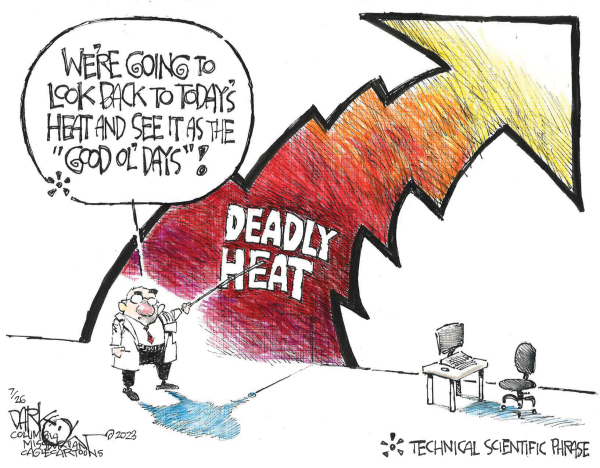Extreme Heat: A Call to Action
The Time to Prepare Communities Is Now

In the wake of the hottest July ever documented, the urgency of addressing extreme heat is real. And the alarming reality of climate change is hitting closer than ever to home, as Ventura County recently ranked as the fastest warming county in the contiguous U.S., closely trailed by Santa Barbara and San Luis Obispo counties. With extreme heat posing such serious threats to human health and the environment, the time to take action is now to prepare for extreme heat and build resilient communities.
Last week, organizations like the Community Environmental Council (CEC), Gray Panthers Santa Barbara Network, and Society of Fearless Grandmothers Santa Barbara came together for the inaugural Extreme Heat Forum to address how seniors can prepare for extreme heat and play a more direct role in building a hardy community. More than 100 community members showed up to learn about the work being done, and more importantly, the work that still needs to happen.
Forums like this help raise awareness about the deadly impacts of heat and the insidious nature of heat exposure. Extreme heat disproportionately impacts vulnerable populations like the elderly, houseless, those with serious medical conditions, and those in poverty. Extreme heat already causes more deaths annually than any other climate impact in California, and nationwide. And while our region isn’t as vulnerable as others, the combination of an extreme heat wave and power outages could present a large-scale tragedy here.
The possibility of such a tragedy looms as an existential threat, especially for the elderly. As such, we need to create more spaces for individuals without access to air conditioning to cool off and also continue to advocate to make electricity more reliable, ensuring the following are prioritized: more grid hardening, local solar and battery installations, solar microgrids at priority community-serving facilities, bidirectional electric vehicle batteries, virtual power plants, and demand response capabilities. We must also increase access to backup batteries that are powered by solar; CEC is working to make this more accessible and affordable.
What else can we do? Look for ways to make changes in your own home — the Community Environmental Council’s Electrify Your Life service assists individuals and businesses to make installing a heat pump (replacing your furnace and add AC in one high-efficiency unit) easier. Support local initiatives to establish neighborhood Resilience Hubs that can serve as places of shelter and support during times of crisis, including heat events.
Stay informed about the actions your elected officials are taking (or not taking) to provide solutions that make a real difference. If you need a resource to help get you started, check out California’s Extreme Heat Action Plan.
Recognize the signs of heat exhaustion, especially confusion, and create a support network of support to get through heat events. Plan how to stay cool at home, and map out nearby cooling centers.
As we continue to face the complex challenges of extreme heat, let’s come together, and get involved in these groups, and with CAUSE, Mixteco Indígena Community Organizing Project (MICOP), Visíon y Compromiso, and others who are helping implement necessary changes, and working to create a safer and more resilient community for us all.
It’s getting hot out there, we need to act now.
Em Johnson is the Director of Climate Resilience at the Community Environmental Council. David Lebell MD is a 30-year veteran in emergency medicine. Now retired, he engages with issues around medicine as it relates to social, political, and environmental concerns.



